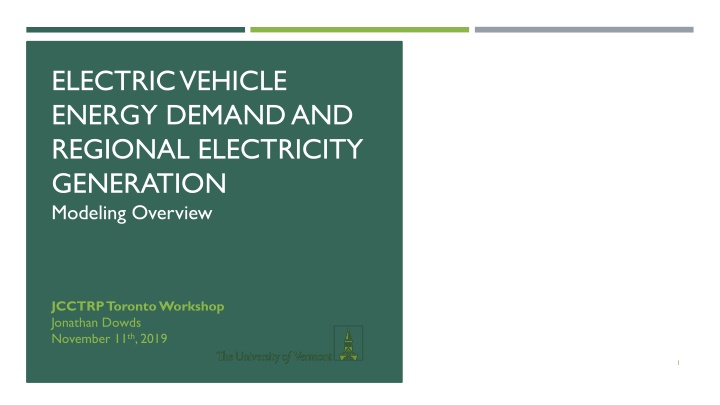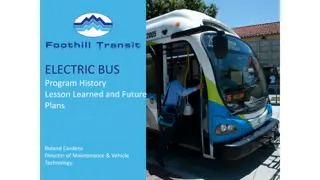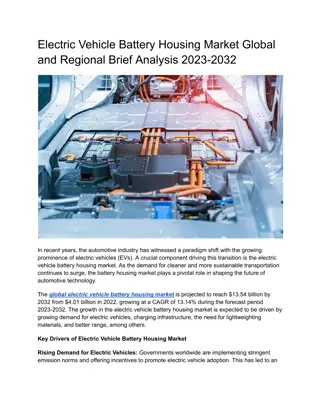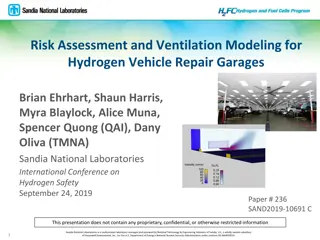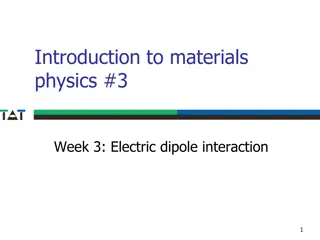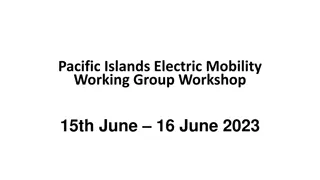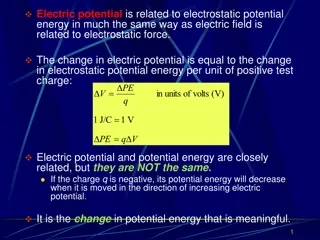Modeling Overview for Electric Vehicle Energy Demand
Explore research on the cost of decarbonizing transportation via vehicle electrification, PEV charging demand modeling, regional electricity generation, and more in the Northeast United States.
Download Presentation

Please find below an Image/Link to download the presentation.
The content on the website is provided AS IS for your information and personal use only. It may not be sold, licensed, or shared on other websites without obtaining consent from the author.If you encounter any issues during the download, it is possible that the publisher has removed the file from their server.
You are allowed to download the files provided on this website for personal or commercial use, subject to the condition that they are used lawfully. All files are the property of their respective owners.
The content on the website is provided AS IS for your information and personal use only. It may not be sold, licensed, or shared on other websites without obtaining consent from the author.
E N D
Presentation Transcript
ELECTRIC VEHICLE ENERGY DEMAND AND REGIONAL ELECTRICITY GENERATION Modeling Overview JCCTRP Toronto Workshop Jonathan Dowds November 11th, 2019 1
POLICY ENVIRONMENT IN THE NORTHEAST UNITED STATES Regional Greenhouse Gas Initiative Electric power sector specific cap-and-trade program launched in 2009 Transportation and Climate Initiative Transportation sector specific cap-and-trade program in development December 2019: Draft MOU & Modeling Results Spring 2020: Final MOU 2021 Rulemaking 2022 Possible implementation 2
RESEARCH OVERVIEW What is the cost of the deep decarbonization of the transportation sector via vehicle electrification? PEV Charging Demand Model: How do you get from travel behavior data to realistic hourly electricity demand? Regional Electricity Generation & Dispatch Model: What power plant should be utilized when to serve the demand for electricity? Combined: How will vehicle electrification impact the power generation in terms of costs, emissions, renewable utilization, etc.? 3
DAILY VEHICLE TRAVEL to WEEKLY VEHICLE CHARGING Construct a full week by sampling 5 weekday and 2 weekend vehicle profiles from the NHTS Run charging behavior algorithm on travel profiles to get full week of hourly charging demand 5
PEV DEMAND IN CONTEXT Wednesday, May 29, 2019 6
REGIONAL ECONOMIC DISPATCH MODEL Model Formulation: Objective function: minimize cost of generation based on marginal costs cg 1) Power balance constraint: supply == demand at every hour 2) Capacity constraint: based on maximum capacity and capacity factors for each generation source 3) Greenhouse gas emissions constraint: annual generation times the emissions rate, rGHG must be below the cap, GHGmax 4) Nitrogen Oxide (NOx) emissions constraint: annual generation times the emissions rate, rNOx must be below the cap, NOxmax (only applies to NY plants & for ozone season only) 5) 7
REGIONAL ECONOMIC DISPATCH MODEL RESULTS PEV penetration EVSE scenario GHG from Electricity Generatio n 25,798,713 28,255,397 28,223,080 28,238,224 28,273,946 GHG from Annual ICEV VMT Total GHG Emissions Emissions Reduction Percent 0% 15% 85,191,910 77,743,286 77,350,988 77,346,823 76,871,248 110,990,623 105,998,683 105,574,068 105,585,047 105,145,194 0 4,991,940 5,416,555 5,405,575 5,845,429 0.00% 4.50% 4.88% 4.87% 5.27% Home Work Probabilistic Universal 8
ON-GOING & FUTURE RESEARCH TOPICS 1. What are the impacts of considering a lager, transnational region (Quebec/Ontario)? What level of transmission interconnection is required? 1. 2. How does PEV charging demand align with: baseline demand, peak load, renewable energy availability? How does this vary with charging infrastructure availability/assumption about charging preferences? 1. 3. How does this additional demand impact generating costs and emissions? What are the impacts of emissions caps/emissions trading? 1. Does PEV demand shift the most cost-effective mix of wind and solar installation? 2. 4. What are the systemic benefits that could be achieved through optimized charging? Are these benefits large enough to incentivize drivers to participate in smart-charging programs? 1. 9
